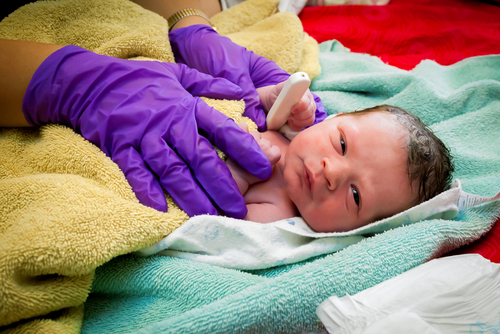The Lower a Newborn’s Vital-signs Test, the Higher the Risk of CP, Study Reports

The lower a newborn’s score on a test used to assess their risk of developing a disorder, the greater the risk they will have cerebral palsy or epilepsy, a study reports.
Researchers said the findings held true whether infants’ scores were in the low or high range of the 10-point test scale. In other words, newborns with slightly lower scores at the low end of the scale were at higher risk of having the disorders than infants with slightly higher scores. And researchers found the same pattern on the high end of the score range.
The research dealt with the Apgar test, which covers five newborn vital signs. The five should not be confused with the four vital signs doctors usually check in adults — pulse rate, temperature, breathing rate and blood pressure.
Medical professionals perform the Apgar test one, five and 10 minutes after a child is born. It includes their heart rate, breathing ability, skin color, muscle tone, and reflex response. The scores range from 0 to 10, with 7-10 considered normal and 0-6 suggesting a child is displaying less vitality than they should.
Changes in scores between one and five minutes indicate a newborn could be at risk of cerebral palsy or epilepsy.
Previous studies have reported that children with Apgar scores between 0 and 3 on the first evaluation and normal scores on their five-minute evaluation are at higher risk of developing cerebral palsy and epilepsy than those with normal scores on both evaluations. Other studies have suggested that results on the five-minute test play the biggest role in defining risk.
Most studies have focused on the effects of low scores. Few have looked at the relationship between small changes in normal scores and the risk of a newborn developing neurological conditions such as cerebral palsy.
Researchers at the Karolinska Institutet decided to investigate the association between Apgar scores in both the low and normal ranges at five and 10 minutes and the risk of a child developing cerebral palsy or epilepsy.
Their study in The BMJ was titled “Five and 10 minute Apgar scores and risks of cerebral palsy and epilepsy: population based cohort study in Sweden.”
The team looked at birth reports on 1,213,470 infants born between 1999 and 2012. All were full-term single births.
They discovered that 1,221, or 0.1 percent, of the children had cerebral palsy and 3,975, or 0.3 percent, had epilepsy.
One of their findings was a correction between low Apgar scores at five and 10 minutes and both cerebral palsy and epilepsy.
Another was that the lower the Apgar score at five minutes, the higher the risk of a child developing cerebral palsy. Two hundred eighty-eight of the children with an Apgar score of 0 at five minutes developed CP, compared with two of the children with an Apgar score of 9, the researchers reported. The risk was even higher in children with low 10-minute scores.
An analysis of small changes in Apgar scores in the normal range showed that the risk of children with five- and 10-minute scores of 7-8 developing cerebral palsy was more than five times higher than children with 9-10 scores. The same did not hold true with epilepsy risk, however.
“Risks of cerebral palsy and epilepsy are inversely associated with five-minute and 10-minute Apgar scores across the entire range of Apgar scores,” the researchers concluded. “Importantly, even a slight decrease in Apgar scores at five or 10 minutes increased [the] risks of cerebral palsy and epilepsy.”


